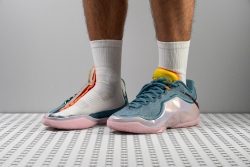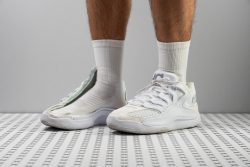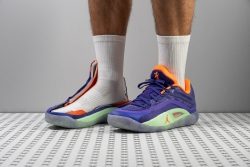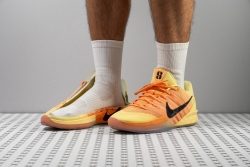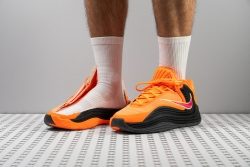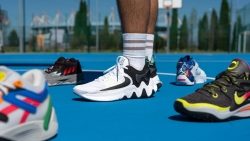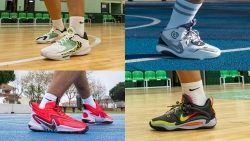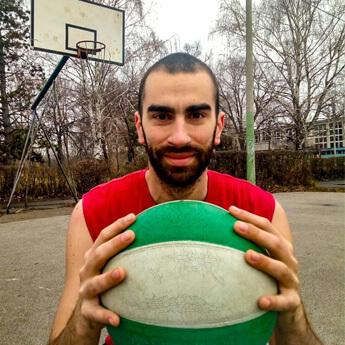7 Best Basketball Shoes For Ankle Support in 2025
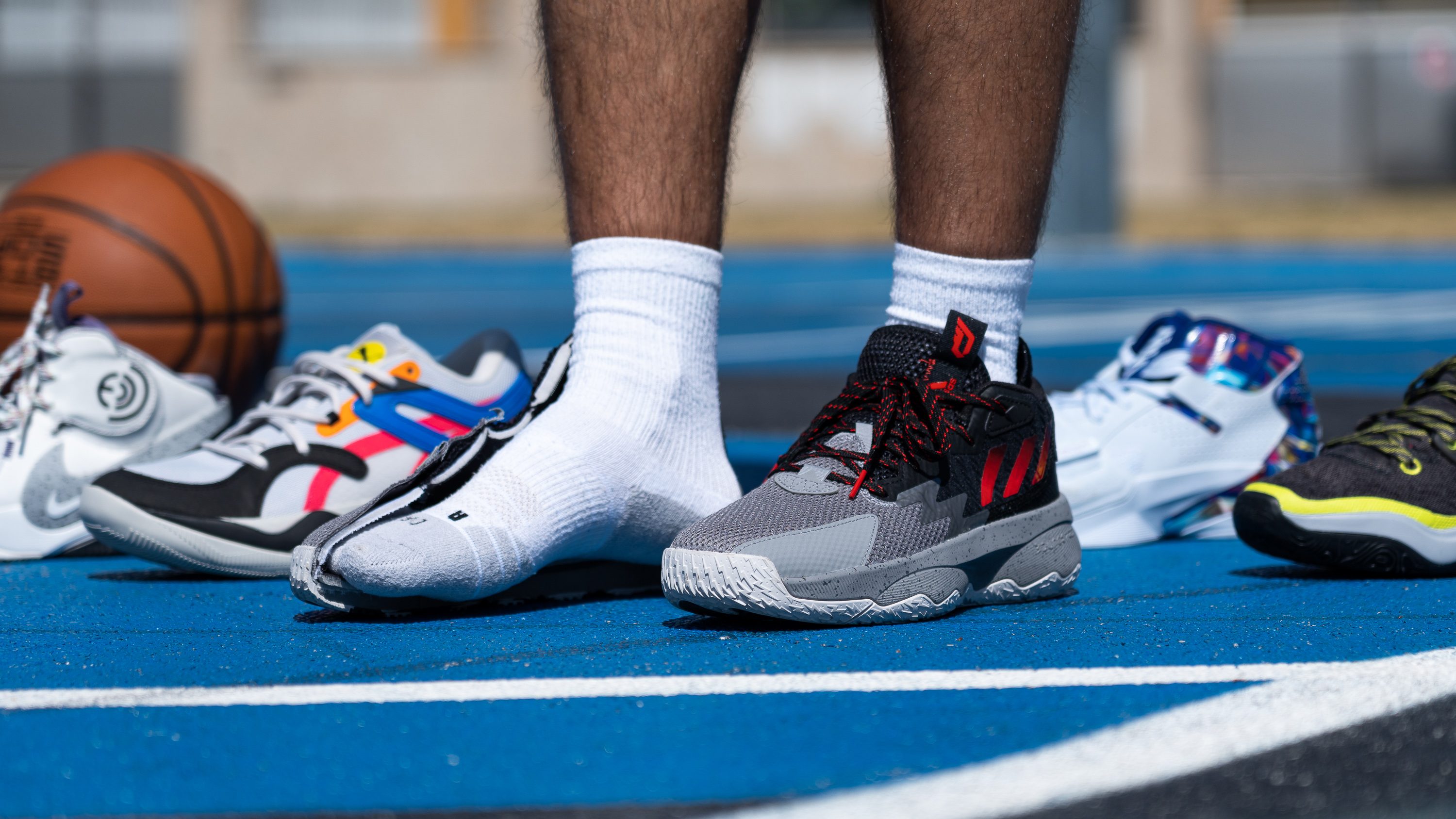
We buy shoes ourselves. We earn commissions when you buy through us, at no extra cost. Why trust us
No amount of ankle collar in a basketball shoe can prevent ankle sprains!
If you experience pain, discomfort, or instability in your ankles, DO SEEK professional advice from a physician before purchasing your next pair of basketball shoes.
For decades, high-top shoes have been synonymous with reliable ankle support and injury prevention. However, we scoured through 30 scientific studies on the subject to discover that this couldn’t be further from the truth! A higher collar does not guarantee protection from ankle sprains.
Fortunately, there are ways to lower the risk of injury, such as wearing ankle braces (or sleeves), applying tapes, and choosing basketball shoes with more stable platforms, lateral outriggers, and highly secure foot containment.
After meticulously testing dozens of hoop shoes on the court and in our lab, we picked the ones that offer great arch support and excel in different areas.
How we test basketball shoes for ankle support
To ensure the validity of our claims and eventual assessments, no review was written without us playing in the shoes first. In addition to this, we include the following:
- We say no to freebies.
Don't get us wrong, free shoes are nice. However, the sponsorship arrangements can cloud the judgement. As reviewers, we feel it's best if we keep sponsors at bay.
- We test the shoes in the lab.
Before we finalise our reviews and picks, we cut the shoes into pieces and test them using durometers, callipers, a Dremel, a smoke machine, etc. The values for different parameters that we gather in our lab help us conclude which shoes are best for various categories.
Best overall basketball shoes with ankle support













































What makes it the best?
Pros
- Outstanding energy return
- Excellent shock absorption in the heel
- Fantastic outsole traction
- Top-tier stability and ankle support
- Highly secure foot lockdown
- Exceptional durability
- Decent flexibility given the design
- True to size and width
Cons
- Still one of the heaviest
- Not for outdoor courts
- Extremely low toebox height
- Not breathable
- Rapid price increase
Supportive basketball shoes with the best traction












































What makes it the best?
Pros
- Excellent shock absorption
- Propulsive energy return in the forefoot
- Superb outsole traction
- Solid ankle support and lateral stability
- Secure lockdown and containment
- Comfortable step-in feel
- Good breathability for warm temperatures
- Decent forefoot flexibility
- Promising durability (okay for outdoor courts)
Cons
- Heavier than average
- Not for wide feet
- No major updates from KD 17
Supportive basketball shoe with the best shock absorption
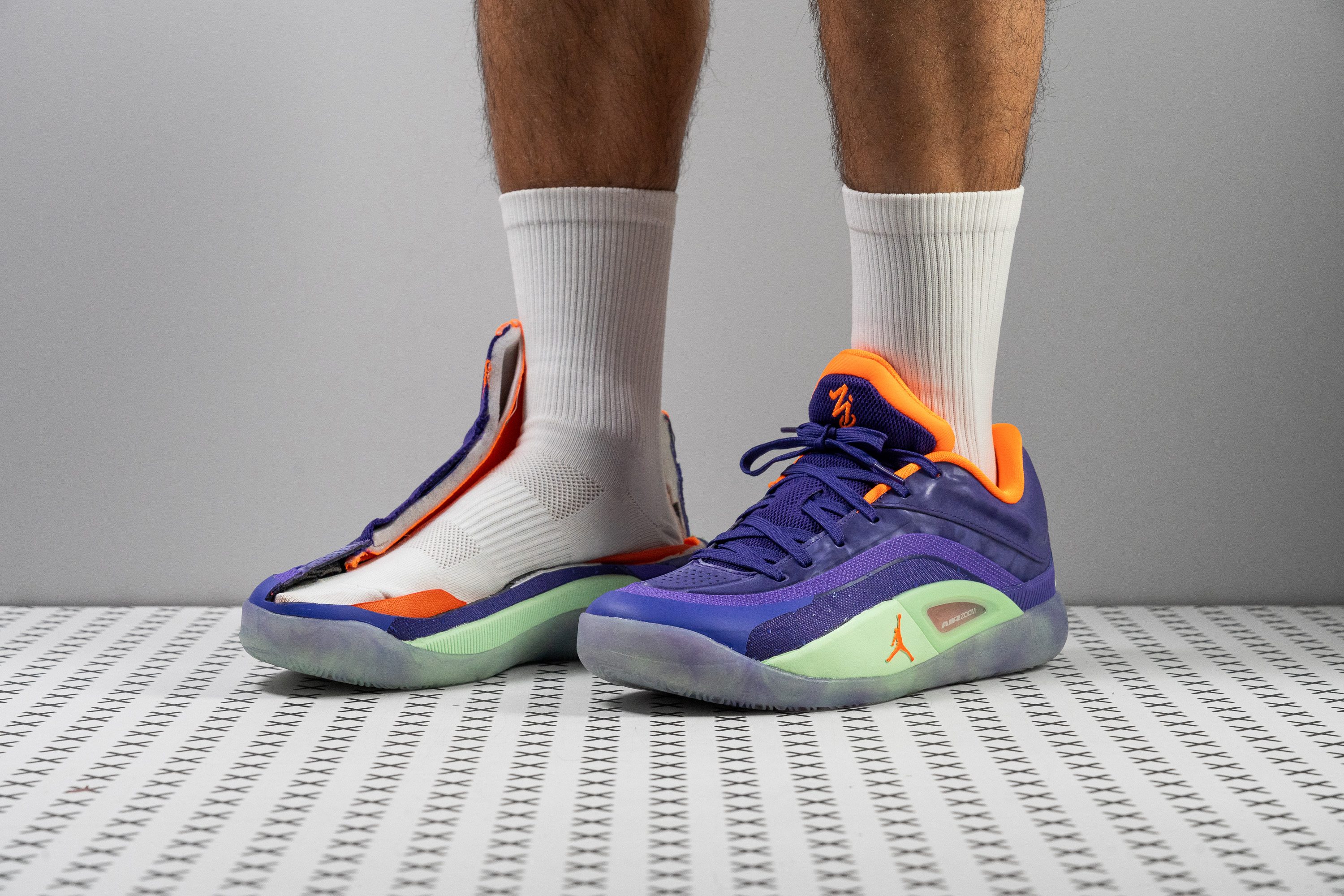














































What makes it the best?
Pros
- Above-average shock absorption
- Propulsive ride with full-length Air Zoom
- Cushioning doesn't mute court feel
- Balanced outsole traction
- Feels agile and manoeuvrable
- Good lateral support
- Fantastic upper and outsole durability
Cons
- Fit is still snug
- Got heavier than average
- Lacks breathability
Supportive basketball shoes with the best energy return
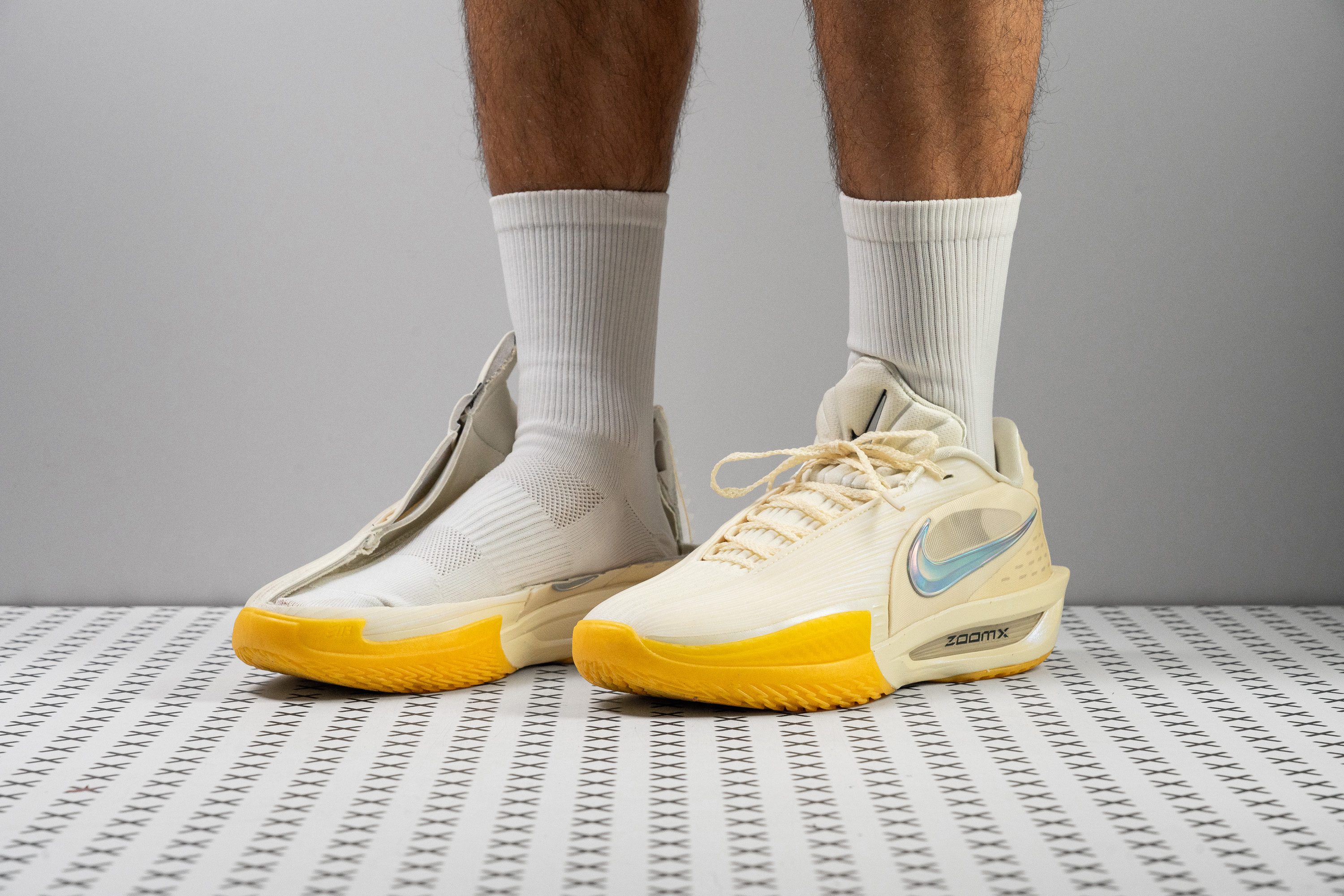













































What makes it the best?
Pros
- Record-breaking energy return with ZoomX
- Significant improvement in lateral support
- Soft and comfortable step-in feel
- Excellent heel and midfoot containment
- Feels highly agile and nimble
- Fantastic outsole grip
- Lighter than average
Cons
- Below-average shock absorption
- Disappointing durability for the price
- Lacks breathability
Best lightweight basketball shoes with ankle support
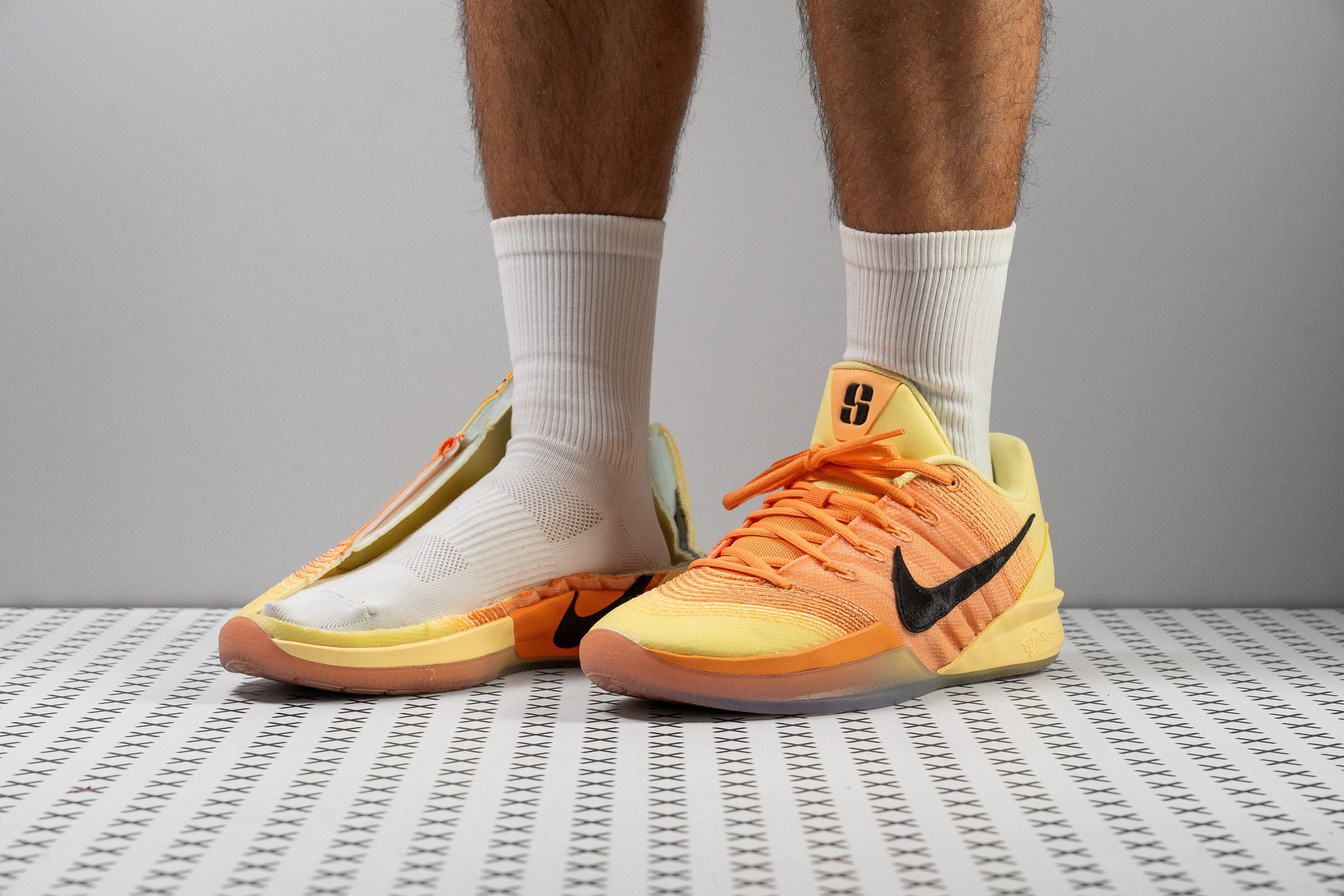














































What makes it the best?
Pros
- Stellar court feel from a grounded platform
- Highly responsive with a propulsive forefoot
- Excellent side-to-side stability
- Amazing lockdown and containment
- Reliable outsole traction
- Super flexible and manoeuvrable
- Much lighter than average
- True to size and width
Cons
- Low shock absorption
- Not for outdoor courts
- Not for wide feet
- Lacks toebox durability
Most supportive mid-top basketball shoes























































What makes it the best?
Ankle support is just a must for any hooper. And even though many of them focus on this feature, there’s one that stands at the top. After thoroughly analysing the Two WXY V5, we can tell you it’s the most versatile basketball shoe with the best ankle support.
First and foremost, it’s designed to adapt smoothly to different playstyles and a wide range of experience on the court (from beginners to veterans). We felt its solid and protective nature from the very first moment we put it on. When we took it to the lab and checked its torsional rigidity and heel counter stiffness, this NB scored two perfect 5/5 on those tests. Then we measured its shock absorption, as our joints felt supported in every sense of the word. With a solid score of 101 SA at the heel and an above-average result of 88 SA in the forefoot, foot safety on the court was a given.
Going back to its upper structure, this NB has an extra eyelet at the top to improve heel support, but it was clear to us that its whole structure focuses on that very aim. It features high lateral walls and an extended heel collar that hugged our feet comfortably and offered wonderful lateral stability. The finishing touch was its heavily padded tongue, at 12.5 mm.
The only drawback regarding this really solid design is that it might need a break-in period. But we do believe the positionless design and general advantages of this hooper overthrow any other inconvenience.
Pros
- Wonderful foot containment and lateral stability
- Excellent shock absorption
- Very supportive underfoot
- Comfortable and soft
- Okay to play streetball from time to time
- Super versatile
- Wide and stable platform
- Optimal and consistent traction
Cons
- Might need a break-in period
- No court feel
- Not many updates from v4
Best budget basketball shoes with ankle support
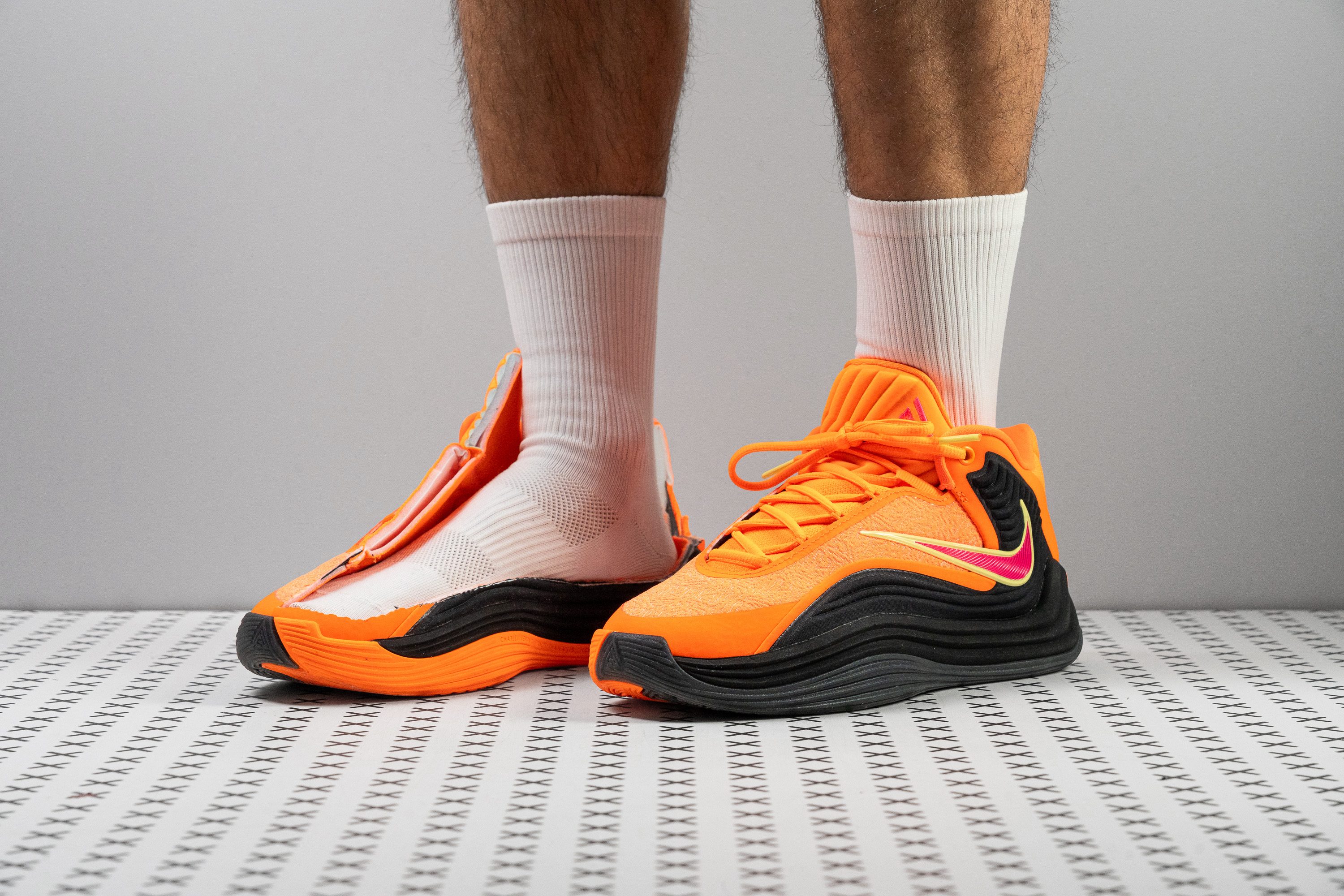












































What makes it the best?
Pros
- Solid shock absorption
- Energy return remained decent without Air Zoom
- Strong outsole traction of a more expensive shoe
- Excellent containments and ankle support
- Planted and stable platform
- Comfortable soft cushioning
- Great energy transfer through stiff build
- Amazing durability for the price
Cons
- Downgraded to budget category
- Not for wide feet
- Heavier than v6
- Not breathable
Why more ankle collar doesn’t mean more ankle support?
In the unfortunate event of stepping on another player’s foot (which is the primary reason for ankle sprains in 70% of cases), the delicate ligament in your ankle takes on your entire body weight! What’s more, it takes the hit from all the force that’s been generated in the prior running or jumping action.
Do you think that a few centimetres of shoe collar can prevent that ligament from spraining? Especially considering that collars are not as closely wrapped around the ankles and legs as braces are.
Now let’s imagine that you are wearing a high-top shoe with a super stiff, cast-like collar that wraps extra securely around the entire lower leg. You perform a very forceful lateral cut, your foot starts to roll over the edge of the shoe, and…Where does all that torque go? It must go somewhere, right?
Straight to the knee! The force travels up your tibia and fibula finding a “sweet” release in the knee joint causing a pretty bad knee injury. This, in turn, is a case against stiff ankle braces, but more on that later.
So, if neither low-top nor high-top basketball shoes can prevent ankle sprains or other types of injuries for that matter, why do some players still prefer one above the other? Let’s have a look at the pros and cons of each setup.
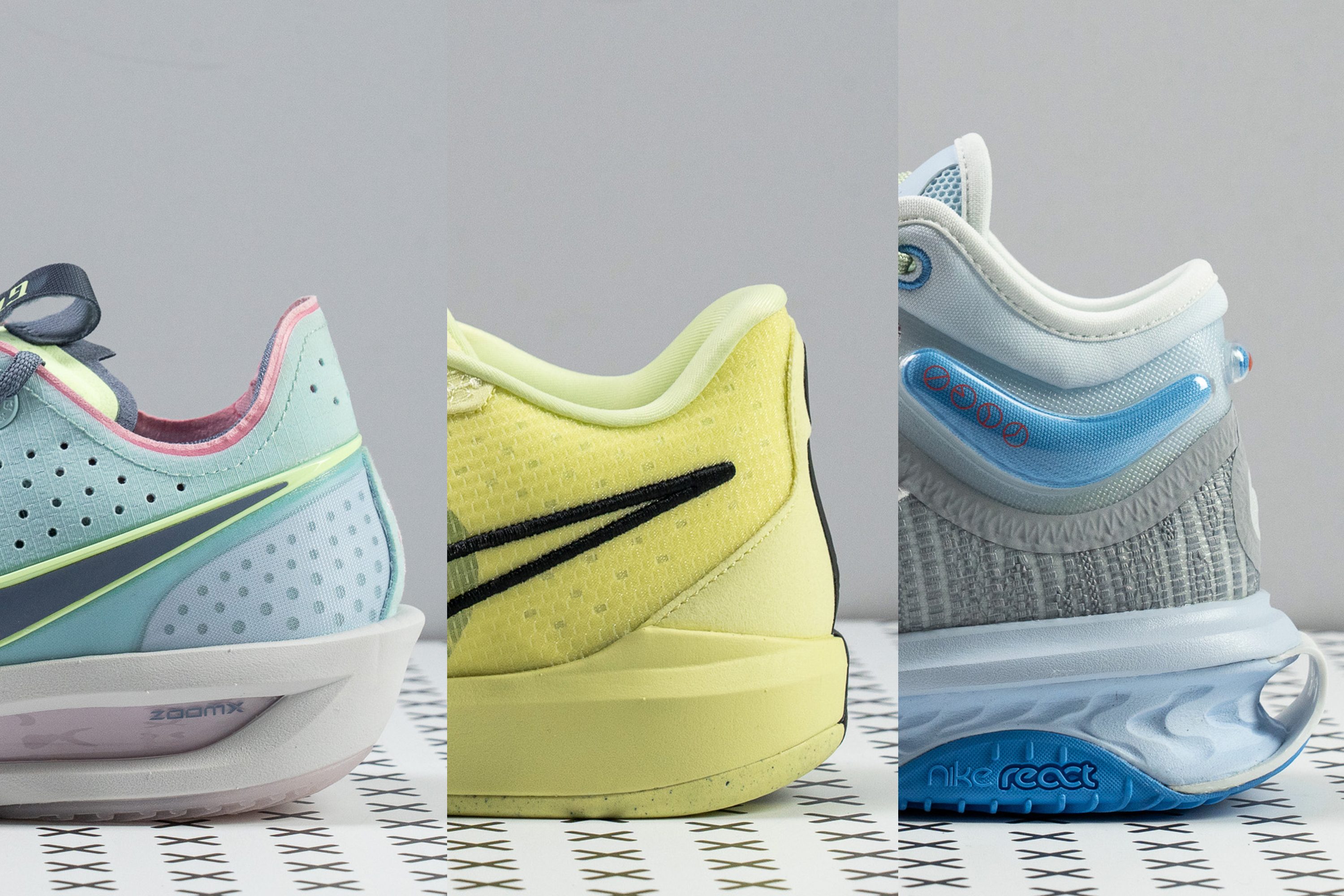
High-top vs. low-top basketball shoes: it all comes down to preference
Our in-depth research on the topic revealed that there’s not a single fact-based evidence that collar height affects ankle/foot safety or athletic performance of basketball players.
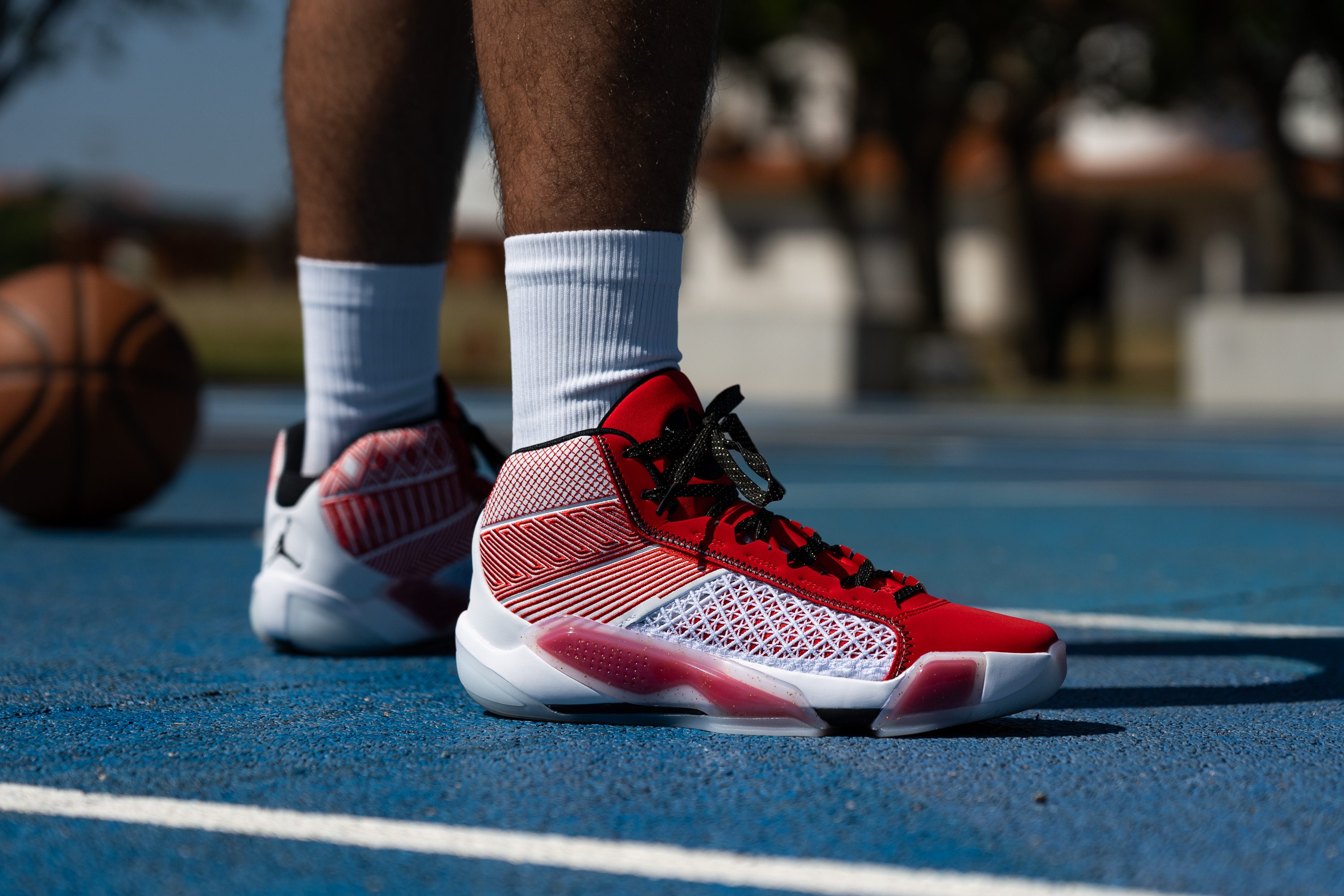
However, a few studies and anecdotal evidence point to some benefits and drawbacks of both collar heights.
Why choose high tops?
-
This study suggests that a higher collar prepares the foot for inversion more quickly and requires a little less effort during muscle activation. This could be beneficial for bigger players in charge of rebounding the basketball under the rim.
-
Some basketball players simply prefer the feeling of “walls” around their ankles as it helps them feel more secure. Thicker and well-padded collars give them a sense of protection.
-
Some athletes hate the feeling of low collar edges digging underneath their ankles during cuts.
-
Some players suggest that having more material and more eyelets in the upper creates a more secure foothold and containment which, in turn, contributes to ankle support.
Over the past decade, high-top basketball shoes have seen a decrease in popularity as the game evolved and more players started leaning towards maximum ankle mobility. What’s interesting is that most high tops aren’t even classified as “High” on the brand websites. As their collar height lowered, these hoop shoes have transitioned into the mid-top category.
Are high tops more expensive than low tops because of the extra material?
Curiously enough, we found that they are not! For both categories, the average retail price (MSRP) hovers around £130-133. Premium and budget options are available among both low-top and high-top basketball shoes.
Why choose low tops?
The rise of low-top basketball shoes dates back to 2008 when Kobe Bryant became the first superstar NBA player to win both Championship and Finals MVP in a low-top shoe. It was his signature Nike Kobe IV shoe.
This precedent boosted the low-top craze in the NBA. These days, more than half of all new signature shoes are made with low-top collars. For example, the line of LeBron shoes made a shift to low-tops starting from the LeBron 20.
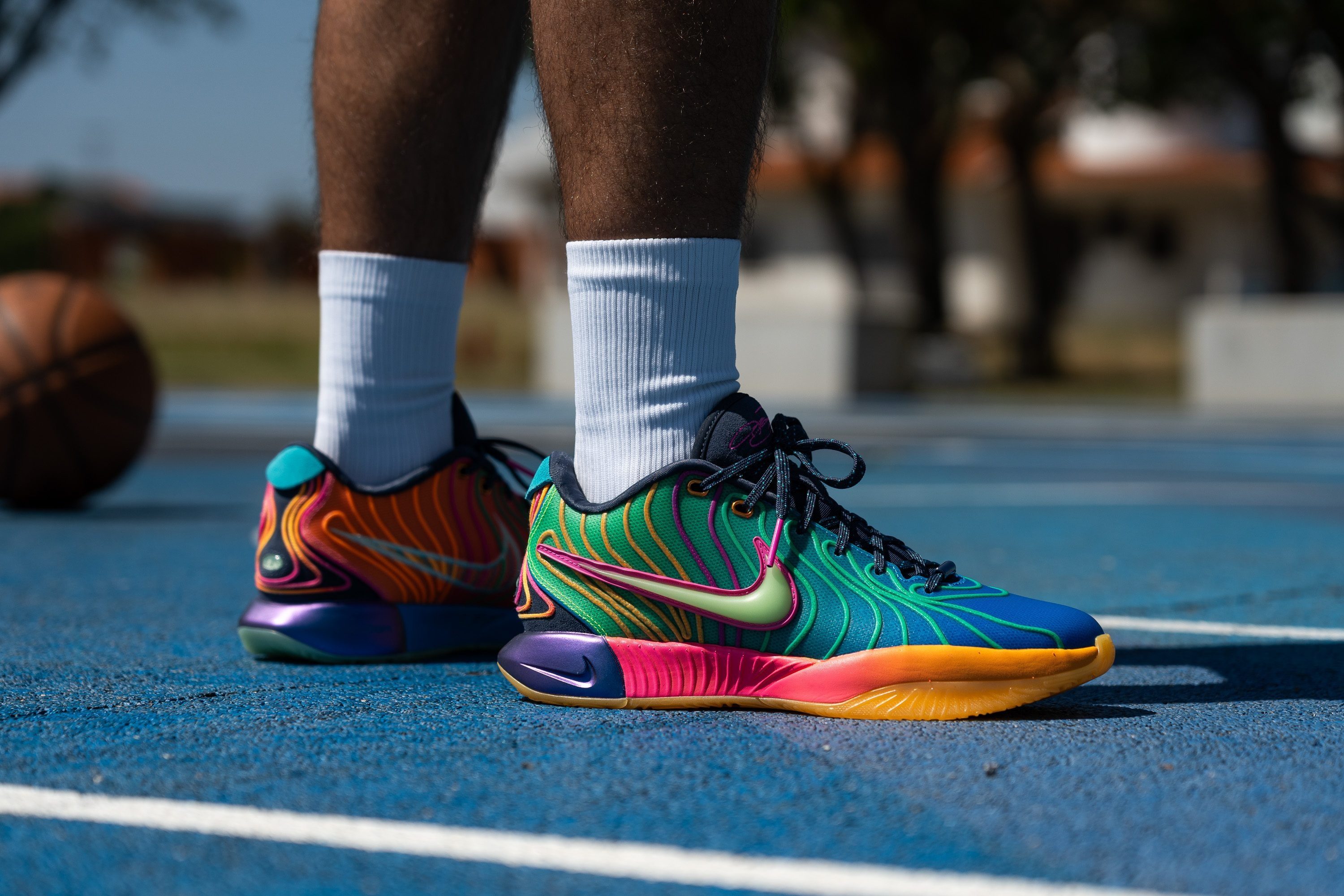
So why do players love a lower collar height so much?
A few studies revealed that low-cut shoes offer a notably bigger range of ankle motion which means more freedom of ankle movement for playing styles with a lot of sudden shifts and quick cuts:
- higher inversion: 42.6 degrees (in low tops) over 38.1 degrees (in high tops). This motion relates to player-cutting manoeuvres such as crossover or an off-ball cutting.
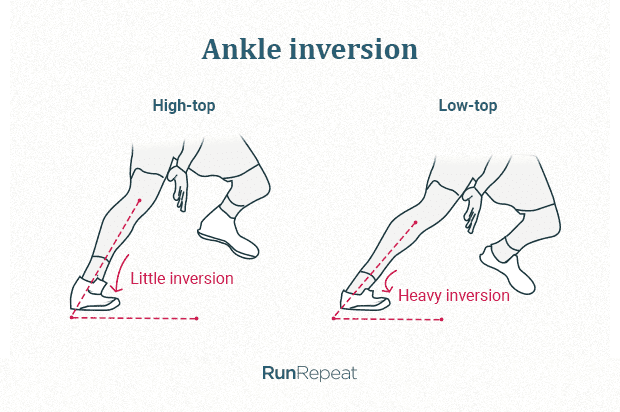
-
higher flexion (downward foot rotation): 77.0 degrees (in low tops) over 85.1 (in high tops) in the minimal angle between ground and feet. Ankle flexion is one of the most common body movements in basketball. The most obvious example would be a jump shot or a layup/slam dunk.
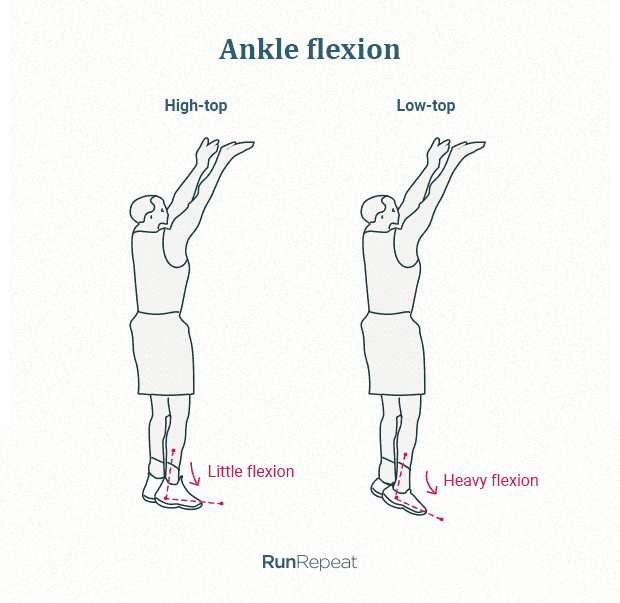
-
higher dorsiflexion (upward foot rotation): 32.2 degrees (in low tops) over 27.0 (in high tops) during weight-bearing manoeuvres (squats).
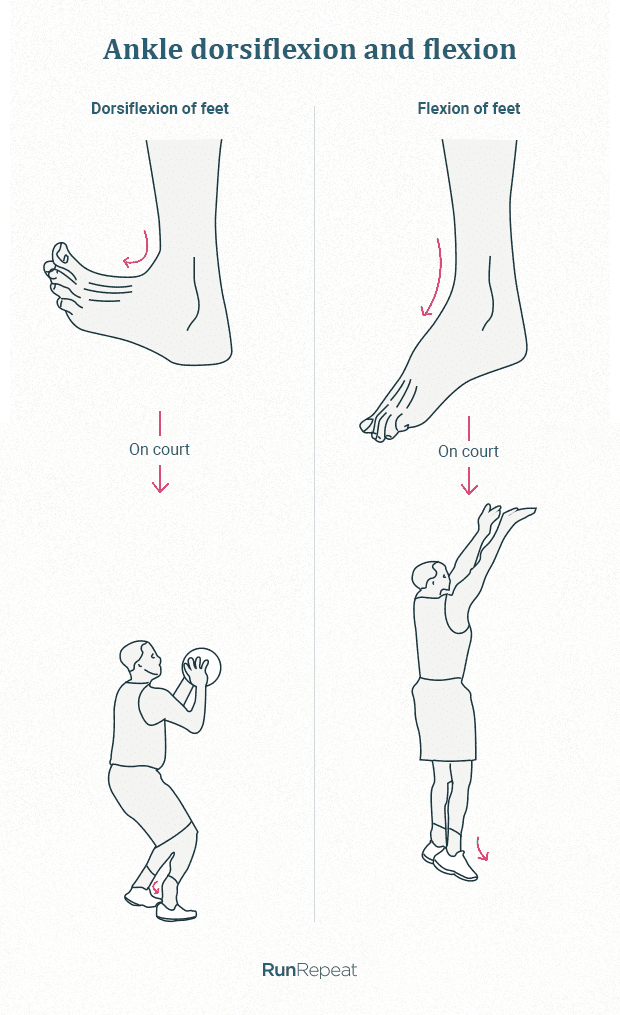
- Our lab tests also proved that low-top shoes are more flexible as they require 15% less force to flex to a 90-degree angle: 37.0N (in low tops) over 42.0N (in high tops).
-
Low-cut basketball shoes tend to weigh less and feel not so chunky on foot. Based on our lab measurements, the average weight of a low-top shoe is 13.3 oz (377g) in a men’s US size 9. Meanwhile, the average weight of a high-top shoe comes in at 14.3 oz (405g).
Still can’t decide between high tops and low tops?
Try a high-top design that has a lower-cut heel portion. This collar shape provides a bit more freedom longitudinally (front-to-back) without losing the support of side panels.
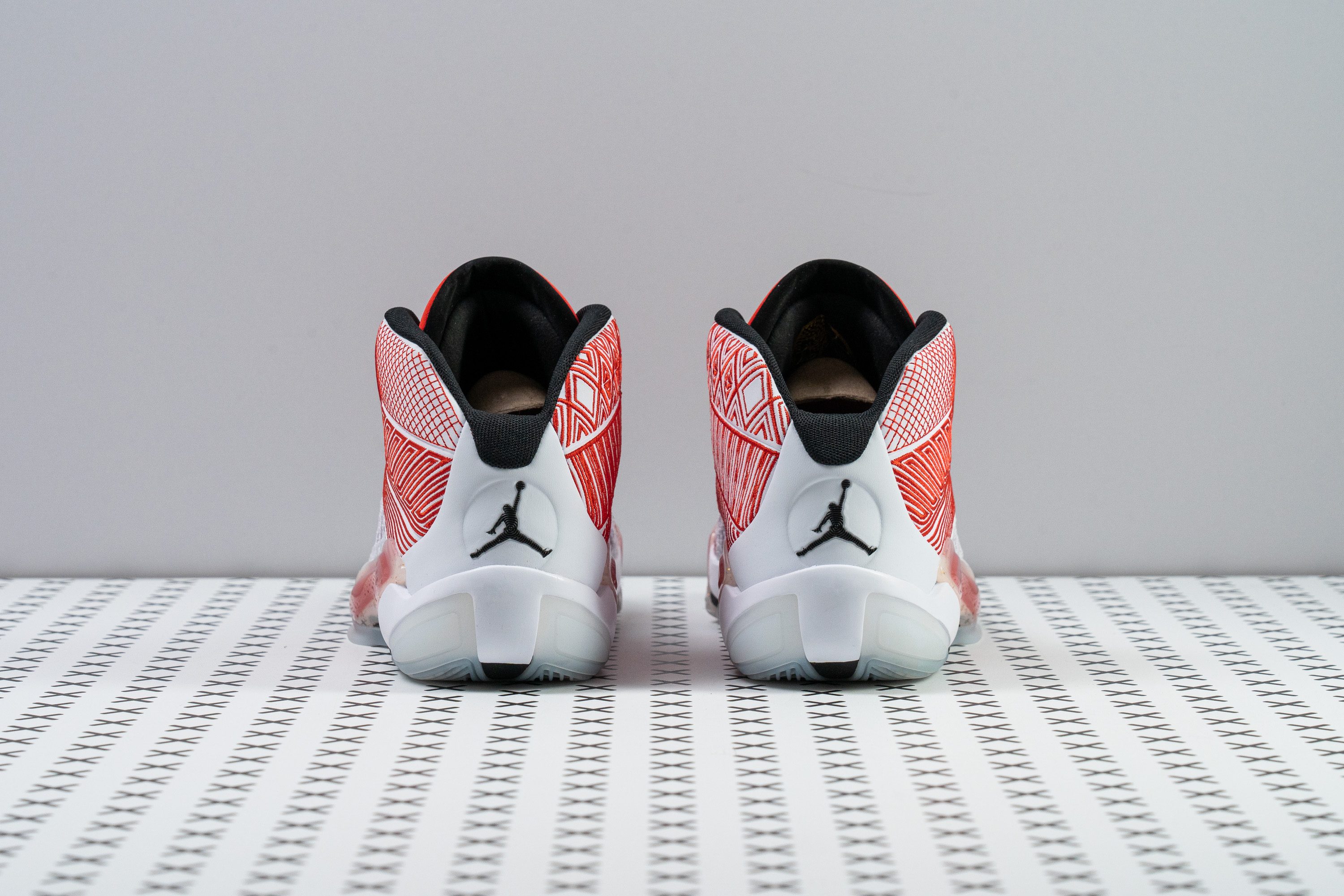
|
Your sense of stability and comfort are more important than the height of a shoe collar. |
If not an ankle collar, then what? 6 characteristics of a supportive basketball shoe
This may not be evident at first but ankle support starts way below the ankle.
To feel stable and well-supported on the court, a basketball shoe must meet the following criteria:
- High torsional rigidity
- Wide base with an outrigger
- Stiff heel counter
- Secure lockdown
- Grounded platform
- Solid traction
1. High torsional rigidity
The shoe should be so stiff that it’s hard or impossible to twist.
We assess the torsional stiffness of every single basketball shoe in our lab rating it on a 1-5 scale. Luckily, most good shoes these days hover around 4 and 5. A sturdy and rigid platform minimises foot twisting during aggressive lateral movements.
2. Wide base with an outrigger
The sole should protrude visibly on the lateral side of the forefoot.

Having a wide base to rely on is crucial, especially when you perform dynamic and forceful cuts. Using a calliper, we measure the widest part of the sole in both the heel and the forefoot. A highly stable shoe will not be narrower than the average and will have a notable flange on the outer side of the forefoot to create a wider landing and push-off area for cuts.
3. Stiff heel counter
The back of the shoe should be stiff enough to hold the heel and ankle securely in place.
We perform a push-and-squeeze on each shoe’s heel counter and rate its stiffness on a 1-5 scale. The most supportive ones get a score of 4 or 5. A stiff, structured, and well-padded heel counter is an essential component of a shoe lockdown. It ensures a secure fit around the ankle, minimising slippage and promoting stability during dynamic movements.
4. Secure lockdown
The shoe must fit true to size with no in-shoe shifting, heel slipping, tongue sliding, etc.
The ideal basketball shoe must be comfortably tight. Enough so that the foot is restricted from moving around in the shoe, but not so much as to restrict circulation. A well-fitting basketball shoe can help maintain proper foot alignment when running and landing to minimise the risk of injury.
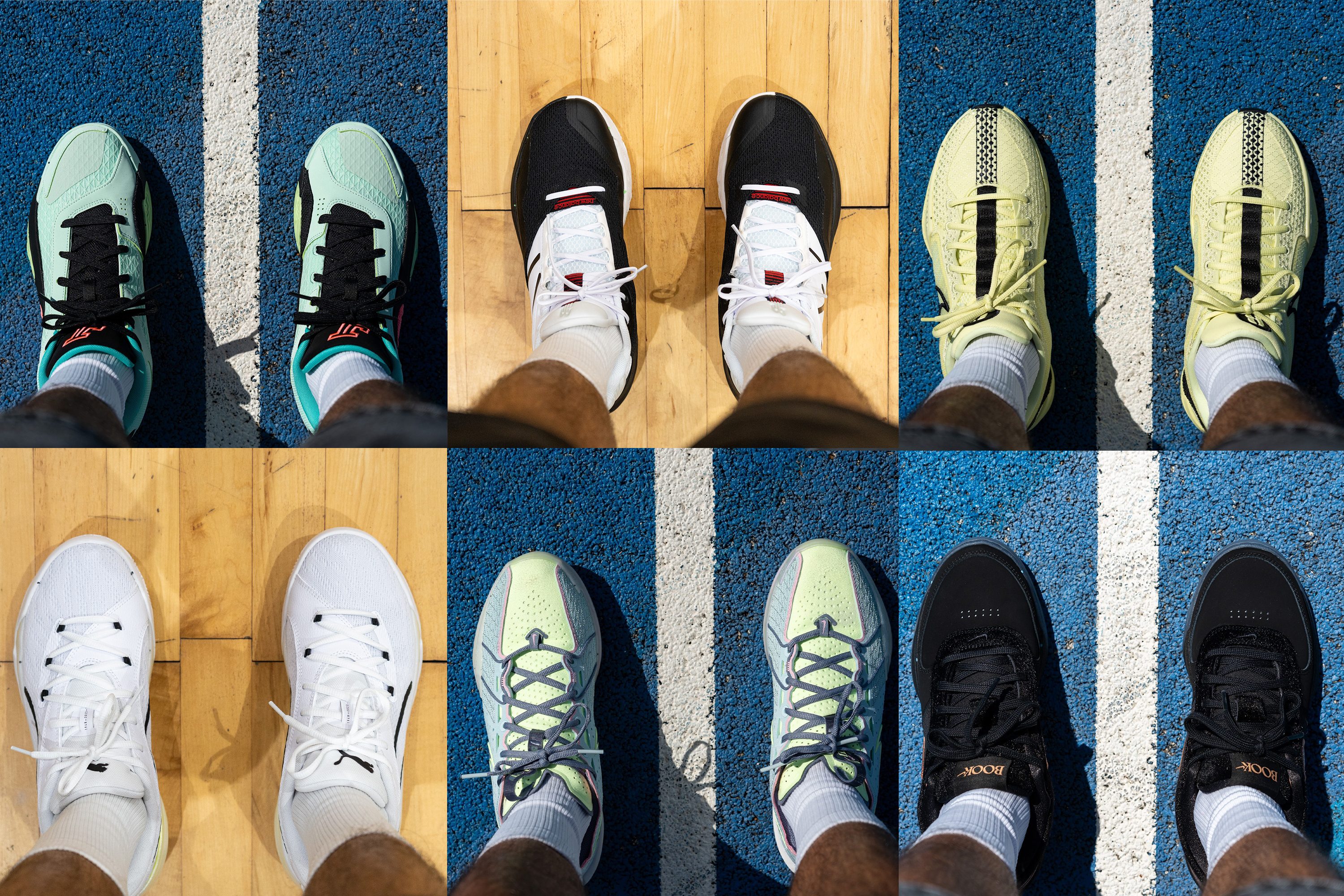
In our lab, we measure the shoe dimensions of every basketball shoe to let you know which ones have a snugger or more spacious fit. We also keep a catalogue of basketball shoes available in 2E (wide) and 4E (extra-wide) width options.
After 2 hours, the gel is frozen, so we have a mould of the shoe's interiors.
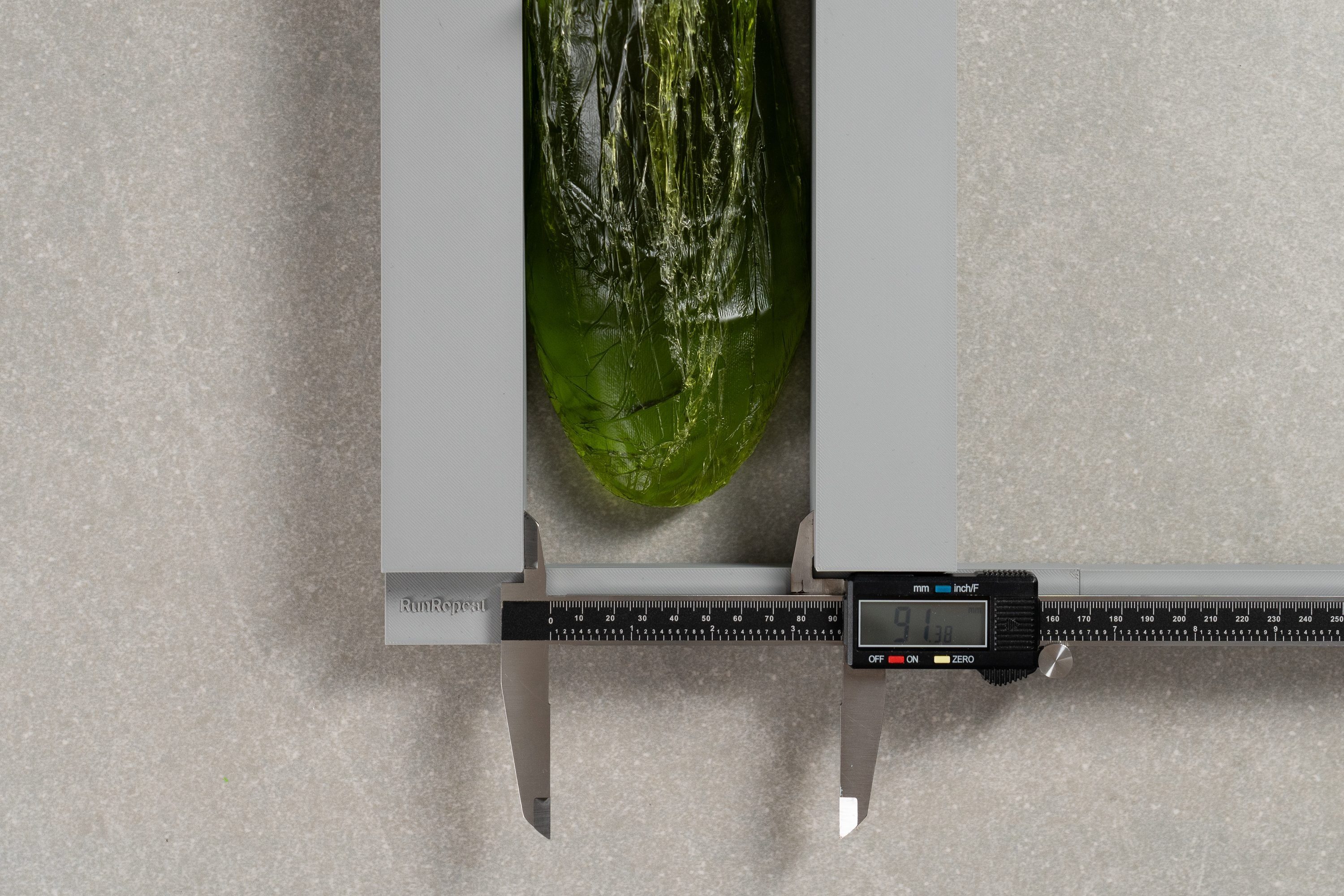
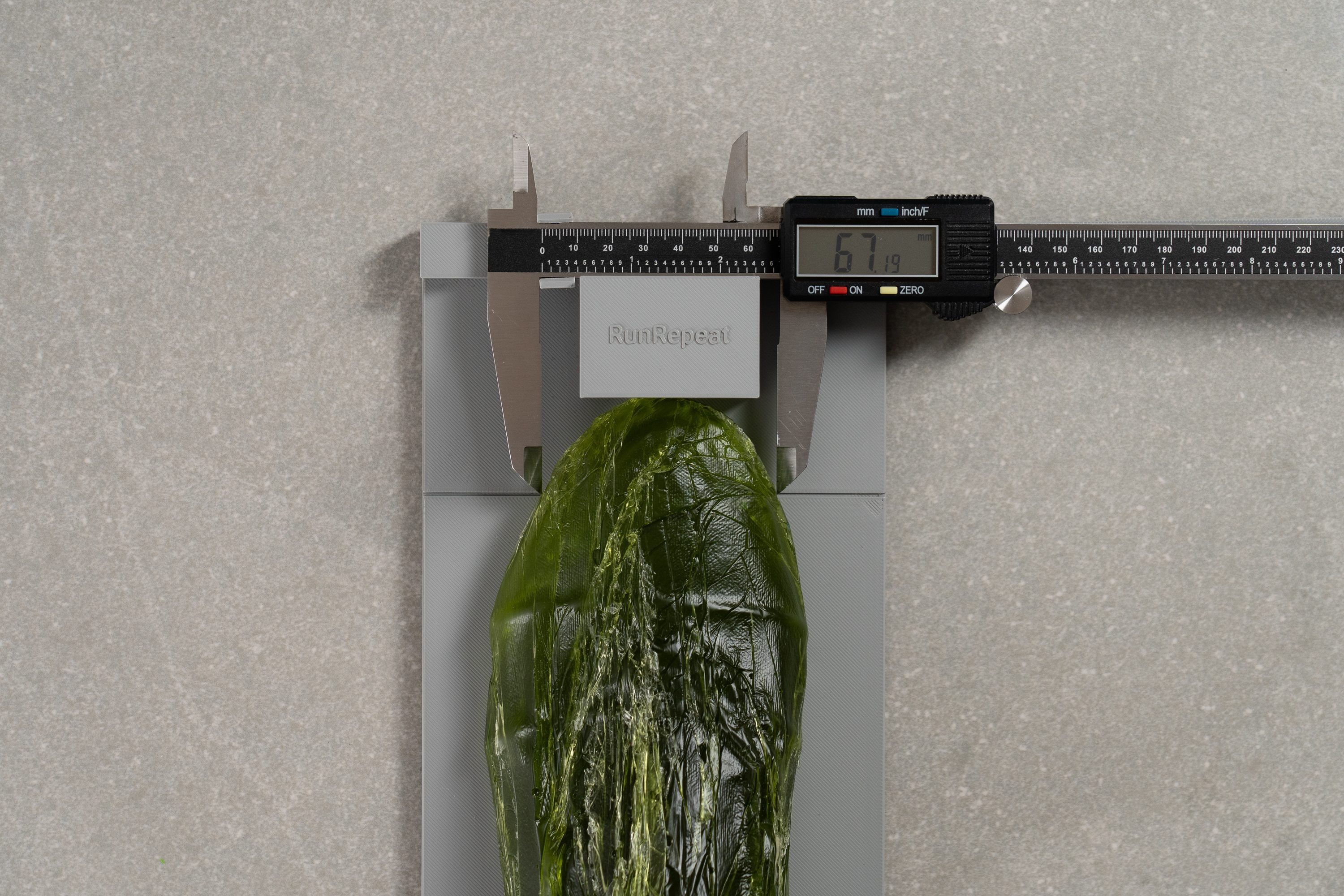
Having this wonderful gel mould also allows us to measure the height of the toebox. This data point is incredibly important for players who often feel pressure on their toes or even get black toenails when toeboxes are too low.
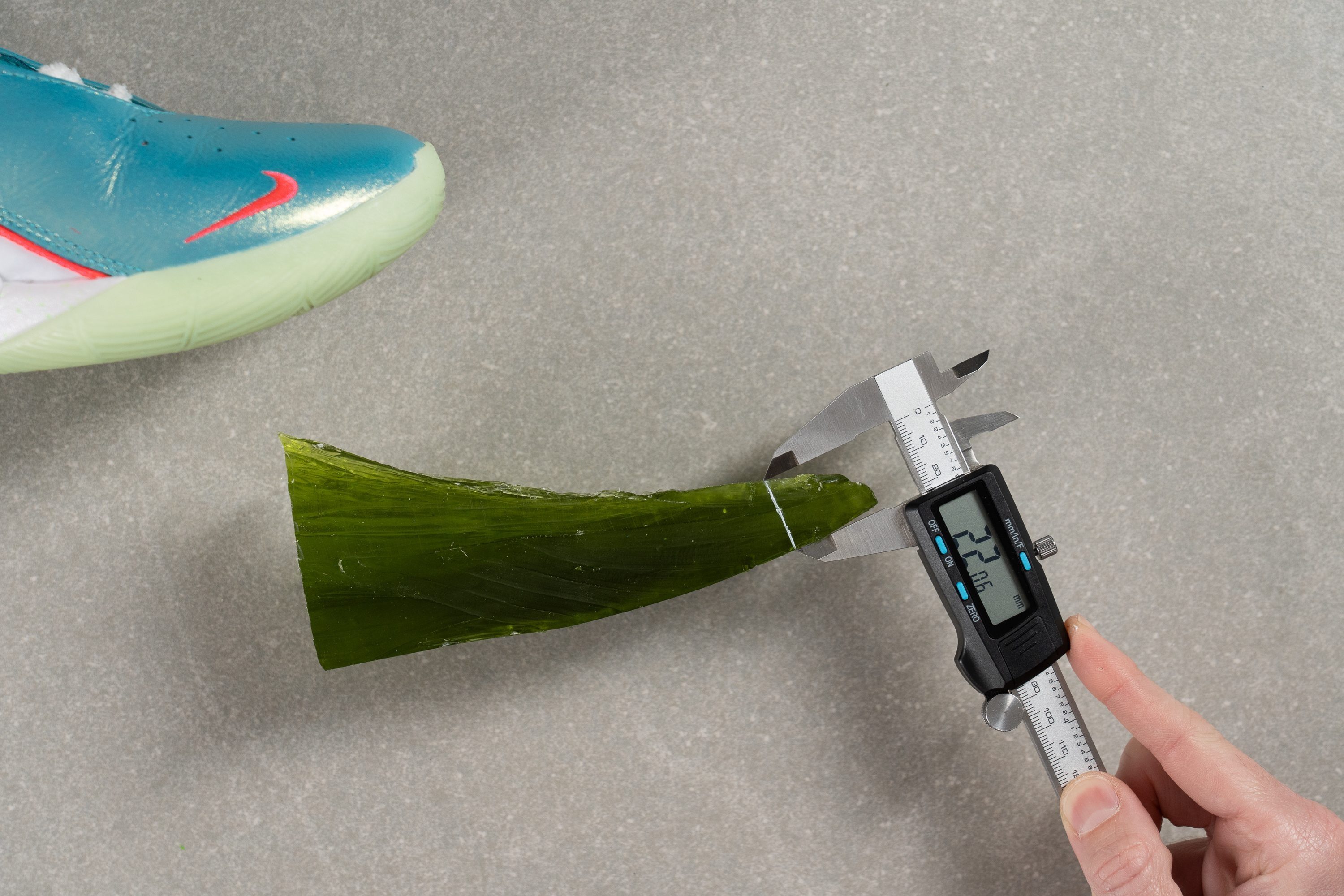
An effective lockdown system helps minimise unnecessary foot and ankle movements, reducing the risk of ankle injuries during gameplay.
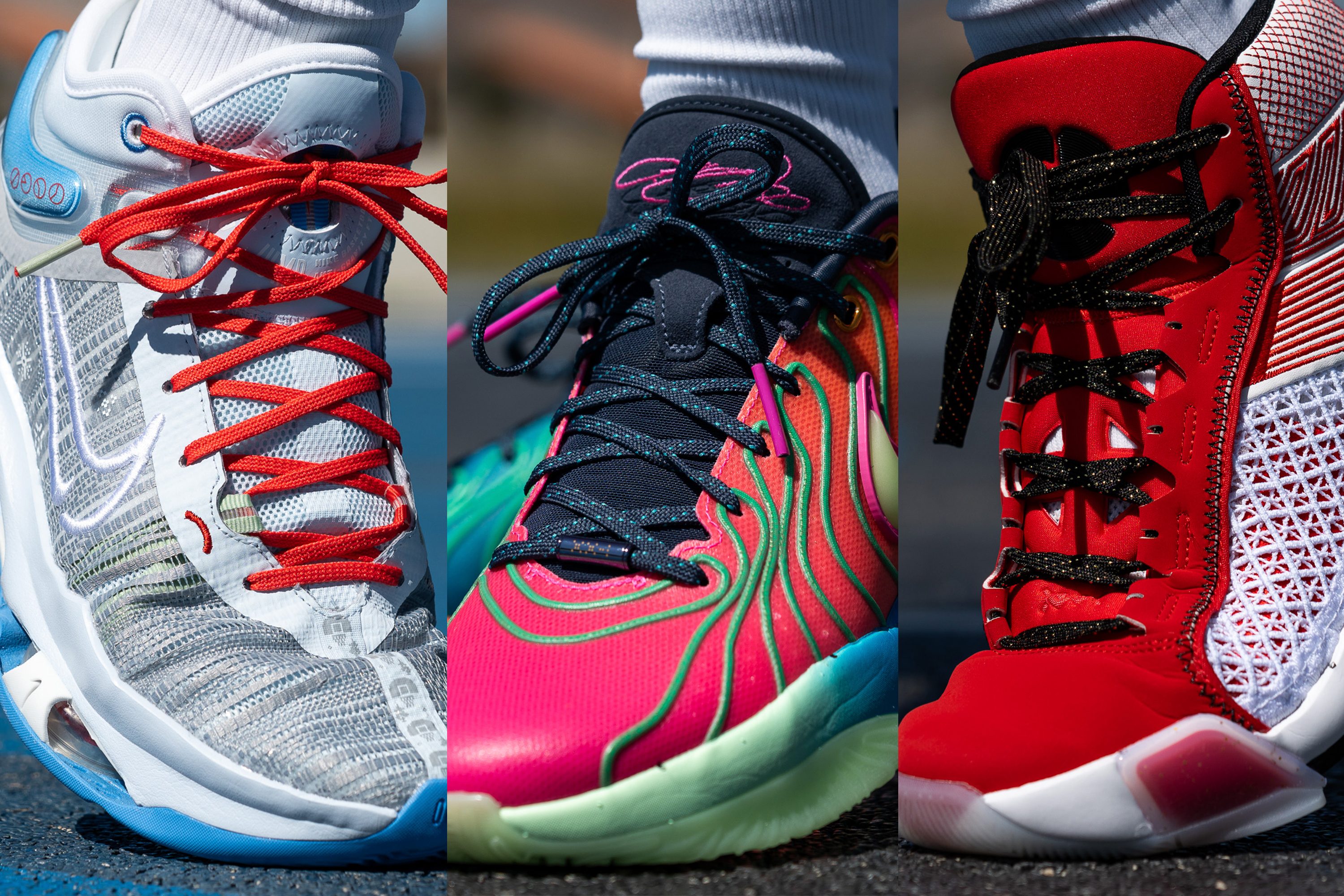
Most modern basketball shoes feature sidewalls or overlays made of TPU or other composite material to ensure your foot stays in the shoe. These often work in tandem with a stiff heel counter and supportive straps.

When trying on basketball shoes, pay attention to how well the external overlays, TPU heel counter, and ankle collar padding wrap around your ankle and heel.
They should provide a secure and comfortable fit, keeping your ankle stable without causing discomfort.
5. Grounded platform
A heel stack below 30 mm is less likely to cause wobbliness.
Both our personal experience and studies point to the fact that having less cushioning can lower ankle instability during lateral manoeuvres. A firmer and lower platform will help to keep you more grounded, in touch with the court, and as a result, more in control of the ankle movement.
6. Solid traction
Makes you feel surefooted by minimising unpredictable foot shifts
This one is pretty self-explanatory - a grippier sole will make your movements and foot adjustments feel more controlled.
Why ankle support is subjective
Ankle support in basketball shoes is subjective because each shoe is designed for specific needs.

These factors include:
Your playing style
It's important to recognise that your style of play may not always align perfectly with the typical expectations for your position on the court.
For instance, many players in guard positions like to drive and take contact. So they’d look for more cushioning and a more sturdy, extended ankle collar.
Whereas shoes like the Kyrie range are designed for responsiveness and not impact reduction.
Your history of injury
This one is pretty obvious. Players who have had ankle injuries or joint pain in the past should opt for better ankle support. Again, this is totally dependent on the severity of your injury.
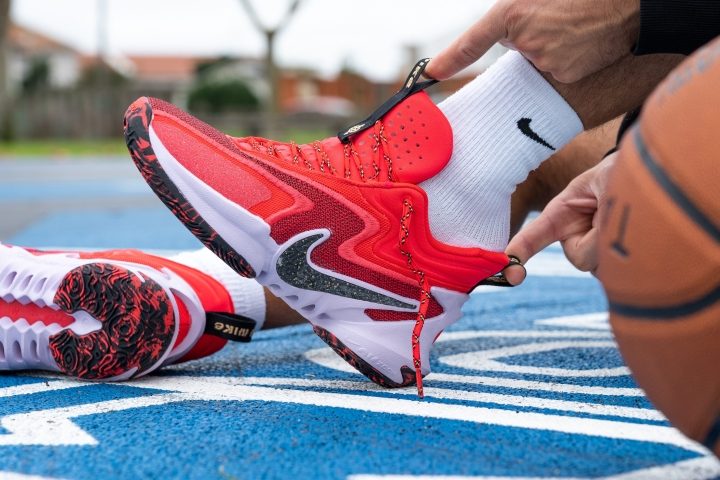
Comfort and preferences
Some players prefer soft and plush cushioning while others like a more responsive feel. Some find high ankle collars too restrictive.
Shoes may not be enough. How to get more ankle support?
In the realm of professional basketball, ankle injuries spare no one.
Each NBA season, ankle sprains affect about 26% of players on average accounting for numerous missed games. Interestingly enough, professional athletes younger than 26 years old show a notably higher incidence of lateral ankle sprains than their older counterparts.
So how do you protect your ankles from the dreaded risk of injury? There are two ways (one doesn’t exclude the other):
- Wear ankle braces or sleeves, or use taping
- Strengthen your feet and ankles
Ankle braces, sleeves, and taping in basketball
Ankle braces are a must to consider if:
- you have a history of ankle injuries
- you suffer from chronic ankle instability
- you seek additional reinforcement*
As a motion-blocking device, an ankle brace can feel uncomfortable to play with at first. This is the stiffest type of ankle support which requires a break-in period. Also, make sure that your current basketball shoes can fit the brace.
*Please note that rigid ankle braces limit movement and gradually get your muscles used to this setup. In other words, your body gets used to having an external device that stops its tendons and muscles from overextending. This can backfire in even more frequent injuries when you play without the braces.
Some athletes are wary of using the stiffest ankle braces because they could hurt the knees while protecting the ankles.
Ankle sleeves (or wraps) are a nice option if:
- you don’t want the stiffness of ankle braces
- you prefer a more customised fitment
Ankle taping is a very popular approach among professional players because it is highly customizable. Some of its drawbacks are that it’s single-use and loses support after about 45 minutes. And it MUST be done by a professional for you.
Tapes and sleeves are most popular because when properly fitted, they mimic the ATFL/PTFL and CFL ligaments of your ankle.
Strengthening your feet and ankles
Even though you can’t completely prevent accidental ankle twists, training muscles around your ankle joint can help minimise the damage when those accidents do occur.
Strengthening your feet and ankles is crucial during your rehab after an injury. Resting is not enough, you need to re-strengthen your ankle muscles and ligaments. Even when your physiotherapy sessions are over, it’s great to keep rehab exercises up when you’re warming up in your first training days/games after your injury.
This will help you heal and get back to the game faster. However, these exercises must be selected by a physical trainer or a physiotherapist. You don’t want to rely on people who don’t really know what they’re doing and get injured again!

